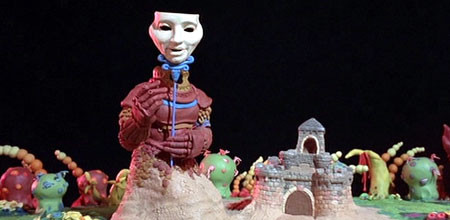A few dates and important things here, and then this blog shall march along to the textual analysis side of this subject.
1970: if time travel is ever invented and you want to use it to march alongside the very first Pride Parade, then head back to New York City circa this year.
1971: the last man jailed for his homosexuality in Canada is released.
1972: Sweden becomes the first country to provide official support for new discoveries people make in their gender identity by giving transsexuals the right to legally change their gender. And, because why stop there (hint: there isn’t a reason), it also offers hormone therapy for free.
Also in 1972: Lesbianism 101 becomes a course offered at the University of Buffalo.
Also also in 1972: A divorce case awards custody of the children to Camille Mitchell – an out and open lesbian. The judge does include a provision that her lover cannot move in to the house so long as the children live there, but it’s a start.
1973: It is declared by the he Australian and New Zealand College of Psychiatry Federal Council that homosexuality is not an illness. In 1973. That’s not even fifty years ago. A month later the American Psychiatric Association follows suit.
1979: the Rainbow Flag is first flown as part of LGBT pride.
1980: the Democratic Party is officially the first U.S. political party to include “homosexual rights” as a part of its platform.
Also 1980: Steve Endean founds The Human Rights Campaign (http://www.hrc.org/).
1982: Wisconsin somehow takes the honor of being the first state to ban discrimination against the homosexual community.
Also 1982: After a few other names are tried, the term AIDS is officially used by the CDC.
1984: Massachusetts Representative Gary Studds is re-elected even with his public reveal on the Senate floor the year before that he is gay.
1985: Rock Hudson brings AIDS sharply into the public eye by being the first celebrity to die from its ravages.
1989: Denmark brings the “civil partnership” into being, affording gay couples all the rights of married couples, minus those of being married in a church and adoption (though the latter right was restored in 2010).
1990: the World Health Organization gets its head on straight (no pun intended) and follows the suit of certain other countries by declaring homosexuality is no longer to be considered an illness.
1991: viewers of the how L.A. Law are treated to the first publicly-broadcast lesbian kiss on television.
1994: the US military institutes the now-infamous “Don’t ask, don’t tell” policy.
Also 1994: homosexuals who feel unsafe in their native country are granted refugee status by Canada. Because they’re cool up there. Not just because it’s actually damn cold.
1995: certain drugs are shown to be effective when it comes to treating AIDS, though they are not without their own potentially-seriously detrimental side effects.
1996: while the world moves onward and upward, the United States passes the Defense of Marriage Act.
Also 1996: viewers of Friends are treated to television’s first lesbian wedding.
1997: the Journal of the Gay and Lesbian Medical Association becomes planet earth’s first peer-reviewed journal dedicated to the study and support of health in the LGBT community.
1999: California kicks things off on the civil partnership front in the United States by legalizing said partnerships (albeit initially without adoption).
I don’t mean to shortchange things here, but there’s even more history to be had as these dates get closer and closer to 2015 than there was when I was trying to encapsulate the causes and effects of World War II – suffice it to say, the intervening years have seen “Don’t ask, don’t tell” repealed, a major section of the Defense of Marriage Act declared unconstitutional, the Boy Scouts challenged on their stance regarding acceptance of homosexuality, same-sex marriage legalized, LGBT rabbis and priests supported, public members of the LGBT community elected to nearly every level of public office, an openly gay character be written into a wide-release animated film (ParaNorman), and so so so much more. All beautiful, all wonderful, all necessary if we’re to continue living as a planet-wide community of human beings.
Because as it was, is, and will be with the women of this world, with any and all peoples of every First Nation, with people of every color and creed, this goes beyond civil rights or social rights. Like all of those, this is a question of human rights.
And in that respect, we’ve still so far to go. The changes between our time now and years past is night and day, but only by comparison. We’re nowhere near – nowhere in sight – of the true other end of the spectrum that holds hate and fear and repression on one side and freedom and love and communication and collaboration and respect on the other. Imagine how different things could be in five years, in ten, in fifty. Can we keep up the momentum? Can we hold the ground we’ve gained? Can we rally more arms and legs and backs to continue pulling, pulling, pulling until the shackles of ego are burst and the bonds of fear and dark feeling broken?
One thing an interested person can do is to get involved, and an excellent place to do so is a local community resource in Capitol Hill called Gay City (https://www.gaycity.org). Books, entertainment, psychological support, health awareness, events of activism, and beyond are all offered as a part of its service to Seattle as a city-wide community.
Which is why we’re partnering with them for two performances, where they’ll have volunteers on hand with material and we’ll be donating the proceeds to their great work. So thanks to them for their support and promotion. It’s our pleasure to be connected with their name and all that they do.


 hungry stars in them,
hungry stars in them,